Building A Sustainable Community
Throughout its more than 50-year history, Walt Disney World Resort has built a strong legacy of environmental sustainability, conservation, and powerful storytelling by writing the next chapter of what’s possible when we work together to create a happier, healthier planet for all.
Finding solutions to important environmental matters in Florida through pioneering conservation stewardship inspires a world of difference while strengthening this community for our cast members and our neighbors.
Disney remains committed to taking meaningful and measurable action to support a healthier planet for future generations as we operate and grow our businesses. We continue our focus on putting possibility into practice and inspiring optimism for a brighter, cleaner, and healthier future—a unified commitment we call Disney Planet Possible. Our commitment to environmental sustainability goes back to our founding nearly 100 years ago as Walt Disney himself was well-known as a conservationist.
Sustainability Highlights
Conservation Area
Of the approximately 40 square miles at Walt Disney World Resort, nearly one-third of the property has been set aside as a dedicated wildlife conservation area.
Solar Energy
A goal for the Walt Disney World Resort is for its available solar energy resources to more than double with new solar arrays constructed by prominent solar development companies in partnership with the utility serving Walt Disney World Resort.
Pollinators
Walt Disney World Resort scientists and researchers oversee conservation programs for plants and their pollinators, like bees, birds and butterflies. They have ensured pollinators would have a yearlong supply of bountiful blooms by creating 160-plus acres of pollinator habitat in and around the solar arrays at Walt Disney World Resort.
Reclaimed Water
Walt Disney World Resort uses reclaimed water for 80 percent of its irrigation needs and 30 percent of its overall needs.
Sustainable Costumes
Select Cast Members at Walt Disney World Resort now wear sustainable costumes made from recycled polyester, fabrics and metals.
Glass Pulverizer
The innovative glass pulverizer, which transforms glass collected from recycle bins into glass cullet at Disney’s Fort Wilderness Resort & Campground, received the Environmental Initiatives Award at the SEAL 2023 Business Sustainability Awards.
Florida Green Lodging Leader
Walt Disney World Resort maintains the Florida Department of Environmental Protection’s Green Lodging designation for 30 hotels – the largest number of Green Lodging-certified hotels in the state.
Single-Use Plastic Reduction
Beginning in 2018, we set a series of commitments to eliminate single-use plastic straws, plastic stirrers and polystyrene cups at Walt Disney World and all owned and operated locations across the globe.
VoluntEARS
Walt Disney World cast members volunteered 233,000 hours in Central Florida through the Disney VoluntEARS program in 2022.
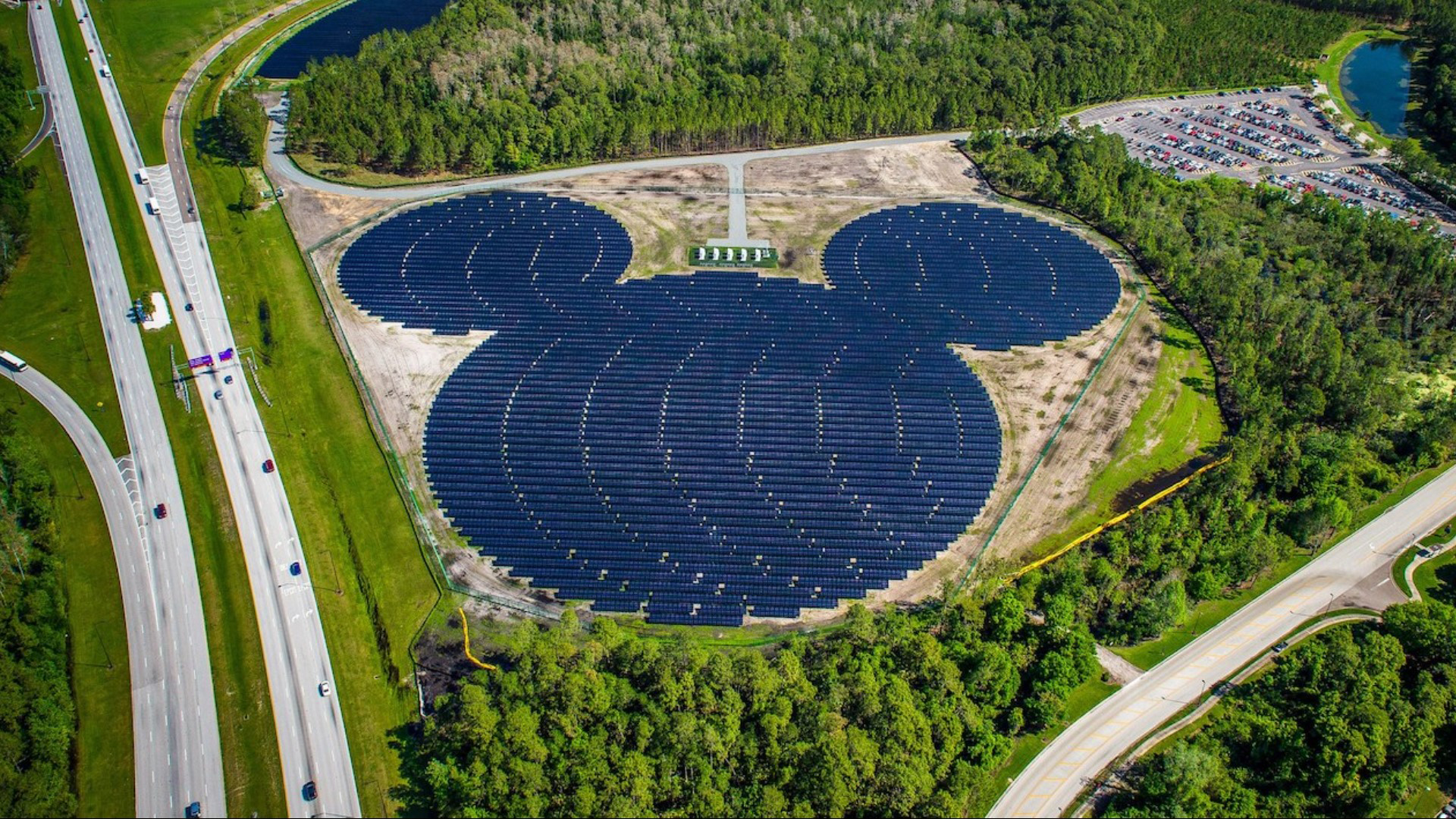
Solar Energy Resources
At Walt Disney World Resort, one of the goals is to double its available solar energy resources by adding new solar arrays constructed by prominent solar development companies in collaboration with the utility serving Disney World.
Starting in 2016, Duke Energy and local utility partners partners built a 48,000-panel, 5-megawatt solar array in the shape of Mickey Mouse opened along the roadway to EPCOT. And in 2019, Origis Energy USA worked with Walt Disney World Resort to open a 270-acre, 57-megawatt solar facility. These facilities strive to provide enough renewable energy to operate two theme parks. Future solar arrays will reduce our carbon footprint and help power even more magic in our theme parks, resorts and beyond.
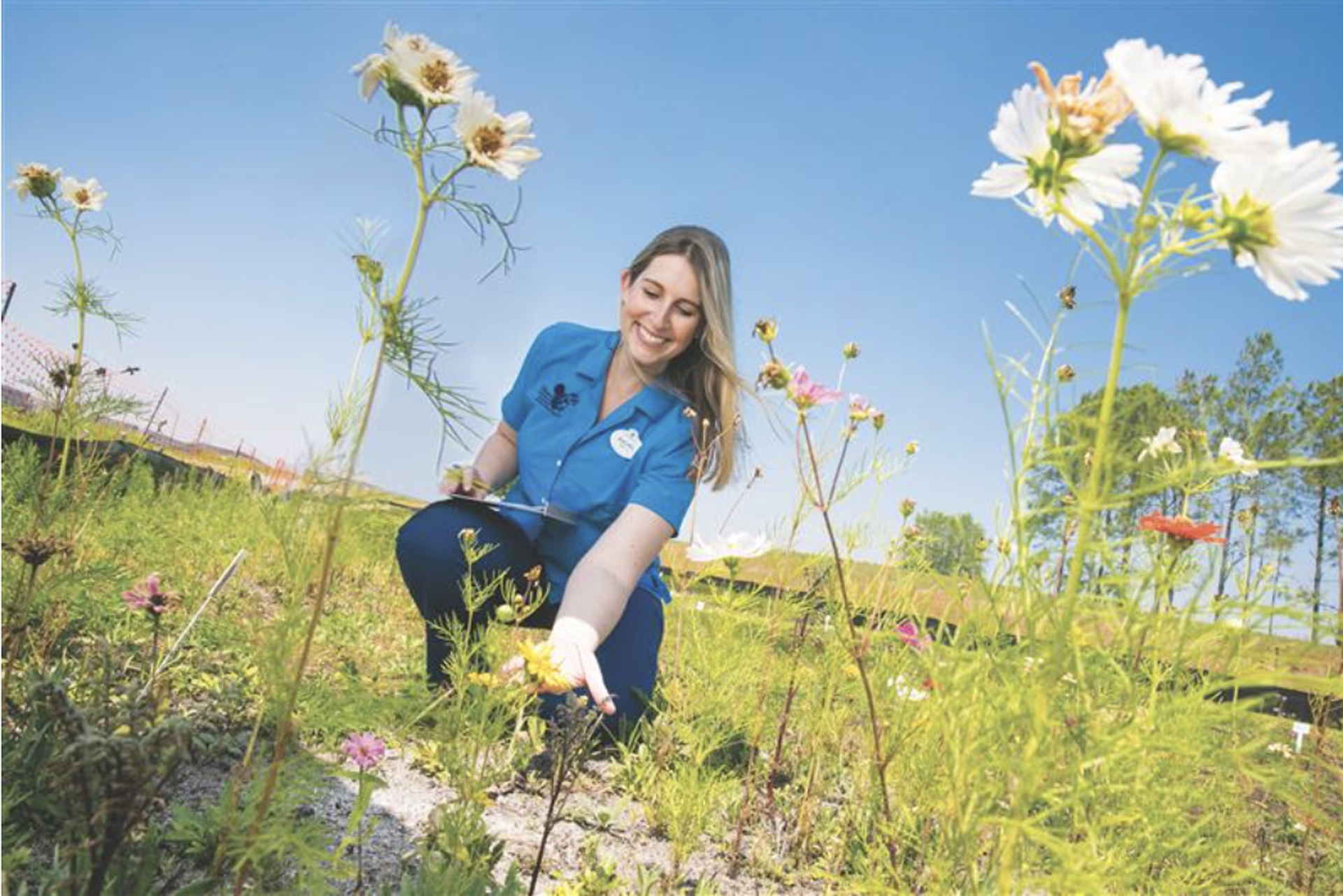
Pollinator Habitats
A dedicated team of Walt Disney World Resort scientists and researchers oversee conservation programs for plants and their pollinators, like bees, birds and butterflies. They have ensured pollinators would have a yearlong supply of bountiful blooms and flowers by creating 160-plus acres of pollinator habitat in and around the solar arrays at Walt Disney World Resort.
Attracting more than 40 native species of pollinators and at least 60 species of insects, they have expanded conservation efforts beyond the resort through habitat protection, community outreach, grants, rescue and rehabilitation. For its success in co-locating solar and pollinator habitats, Disney was awarded the Electric Power Research Institute (EPRI) & North American Pollinator Protection Campaign’s (NAPPC) Pollinator Electric Power Award in November 2022.
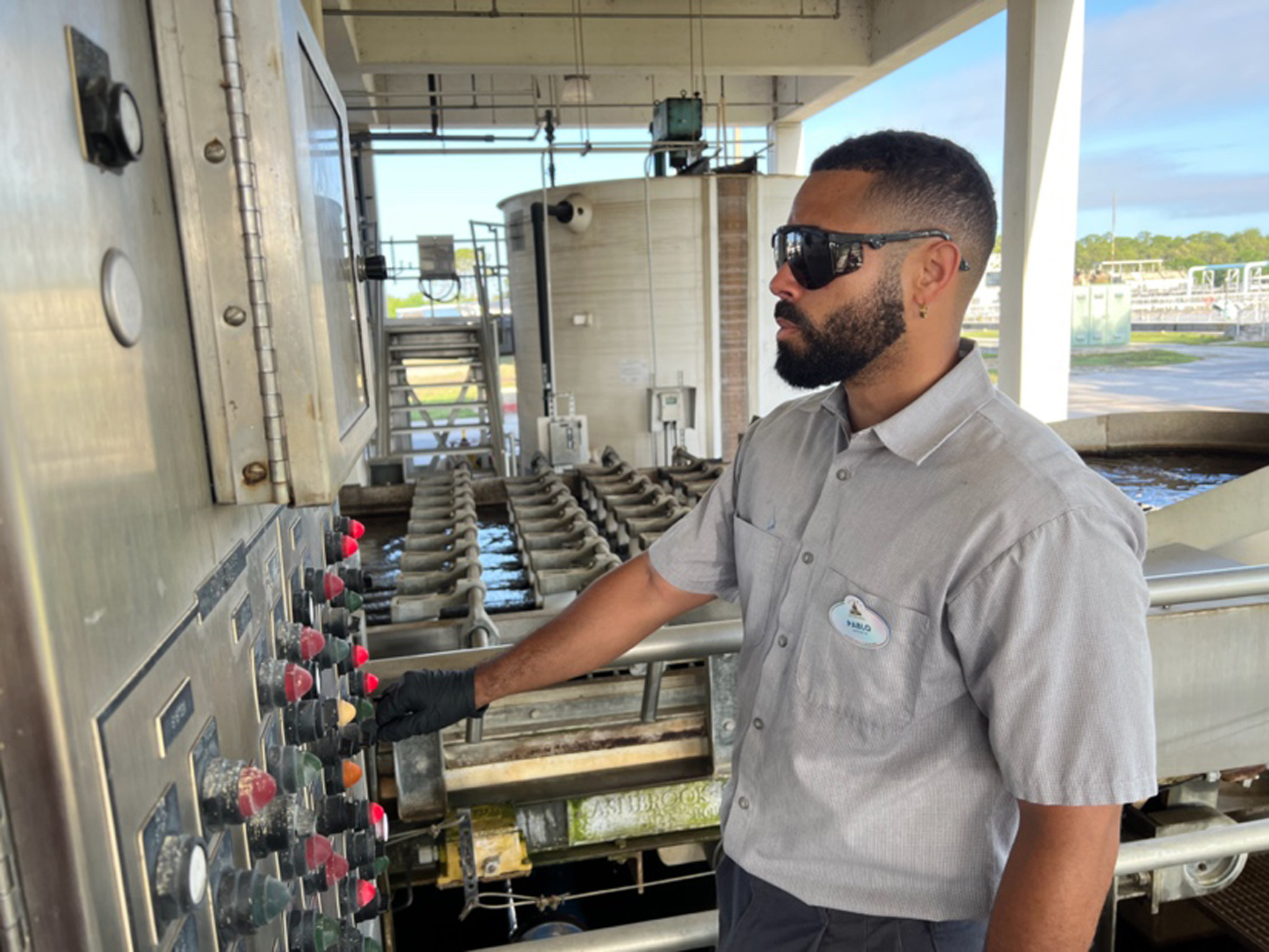
Water Conservation
Walt Disney World Resort’s approach to water conservation begins with using less water where possible and maximizing use of recirculated and reclaimed water. Approximately 80 percent of the resort’s irrigation needs, and 30 percent of its overall water needs, are met with reclaimed water.
As we work towards our goals for 2030, we are committed to implementing local watershed stewardship strategies that help promote regional watershed health.

Florida Green Lodging Leader
The Walt Disney World Resort maintains the Florida Department of Environmental Protection’s Green Lodging designation for 30 hotels – which is the largest number of Green Lodging-certified hotels in Florida. To achieve this special designation, hotels must focus on five categories water conservation, environmental education and awareness, waste reduction, energy conservation and indoor air quality.
Disney’s Boardwalk Inn Resort was among the first hotels in Florida to receive the designation when the program launched in 2004.

Impactful Materials
By 2030, our goal is for 100% of our branded retail product textiles to contain recycled or certified sustainably sourced content or be made from lower impact alternatives. Beginning in 2018, we set a series of commitments to eliminate single-use plastic straws, plastic stirrers and polystyrene cups at Walt Disney World and all owned and operated locations across the globe.
Uniquely sustainable costumes have also been designed for cast members across Walt Disney World Resort. Themed costumes worn by Cast Members on TRON Lightcycle / Run are made from recycled polyester. But that’s not all, over at Guardians of the Galaxy: Cosmic Rewind, 70% of the base fabric for each is made from recycled materials, and the metal buttons are made from 75% recycled metals.
Food and beverage teams at Walt Disney World wear aprons made from 100% recycled materials, and even the new PhotoPass Green costumes are made from recycled materials.
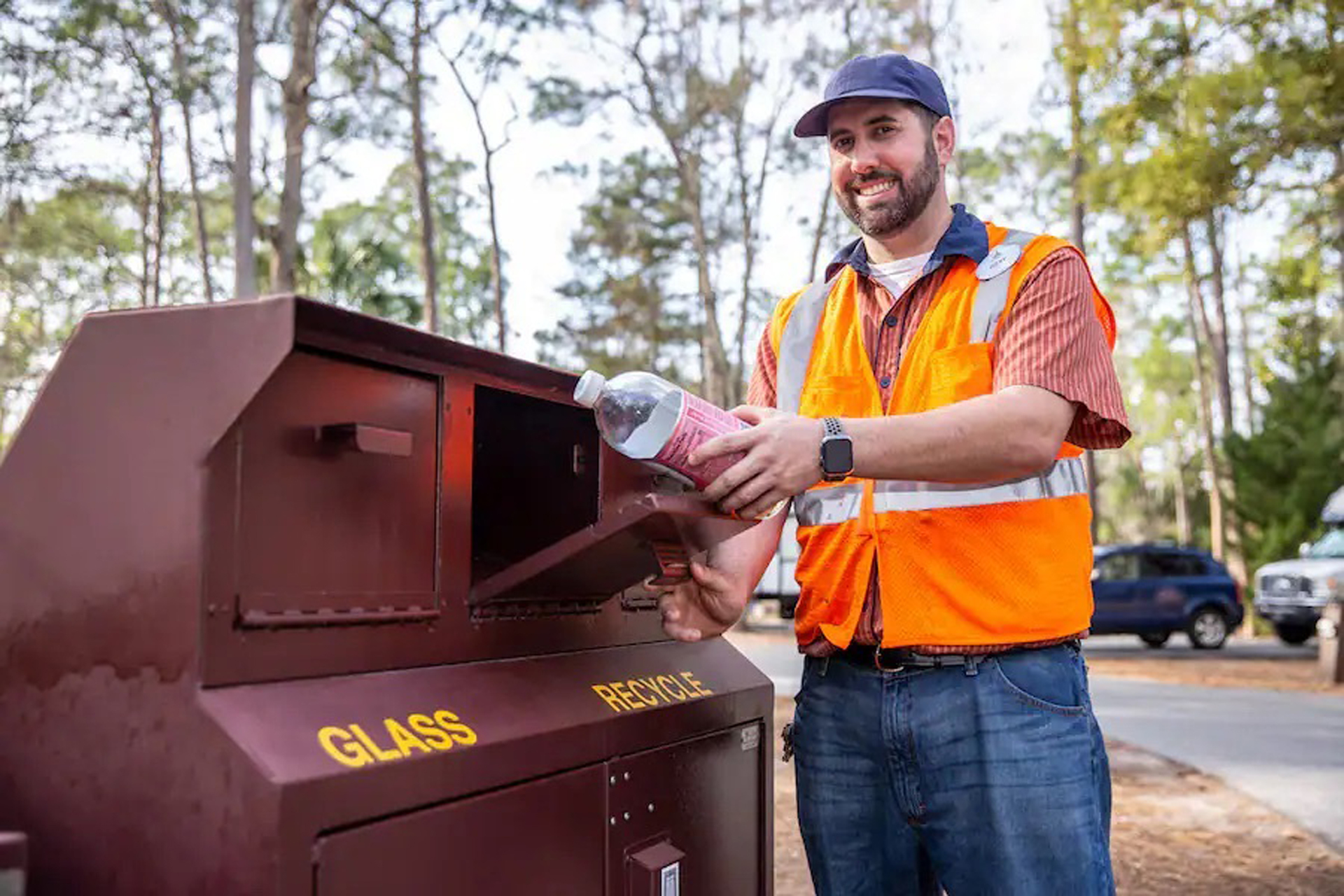
Pioneering Glass Recycling
With the help of a machine that pulverizes glass into gravel and sand-like pieces, we’re not just imagining the possibilities for a world in balance, we’re working to make it a reality.
As part of a pilot program, we’re transforming glass collected from recycle bins at Disney’s Fort Wilderness into crushed glass that can be used for filling in holes on gravel roads and our horseback riding trails. In the future, this material could have many other uses across Walt Disney World including roadbeds, golf course bunkers, filtration systems, sandbags and drainage improvements, to name a few.
This innovative glass pulverizer pilot program at Fort Wilderness Resort & Campground just received the Environmental Initiatives Award at the SEAL 2023 Business Sustainability Awards.
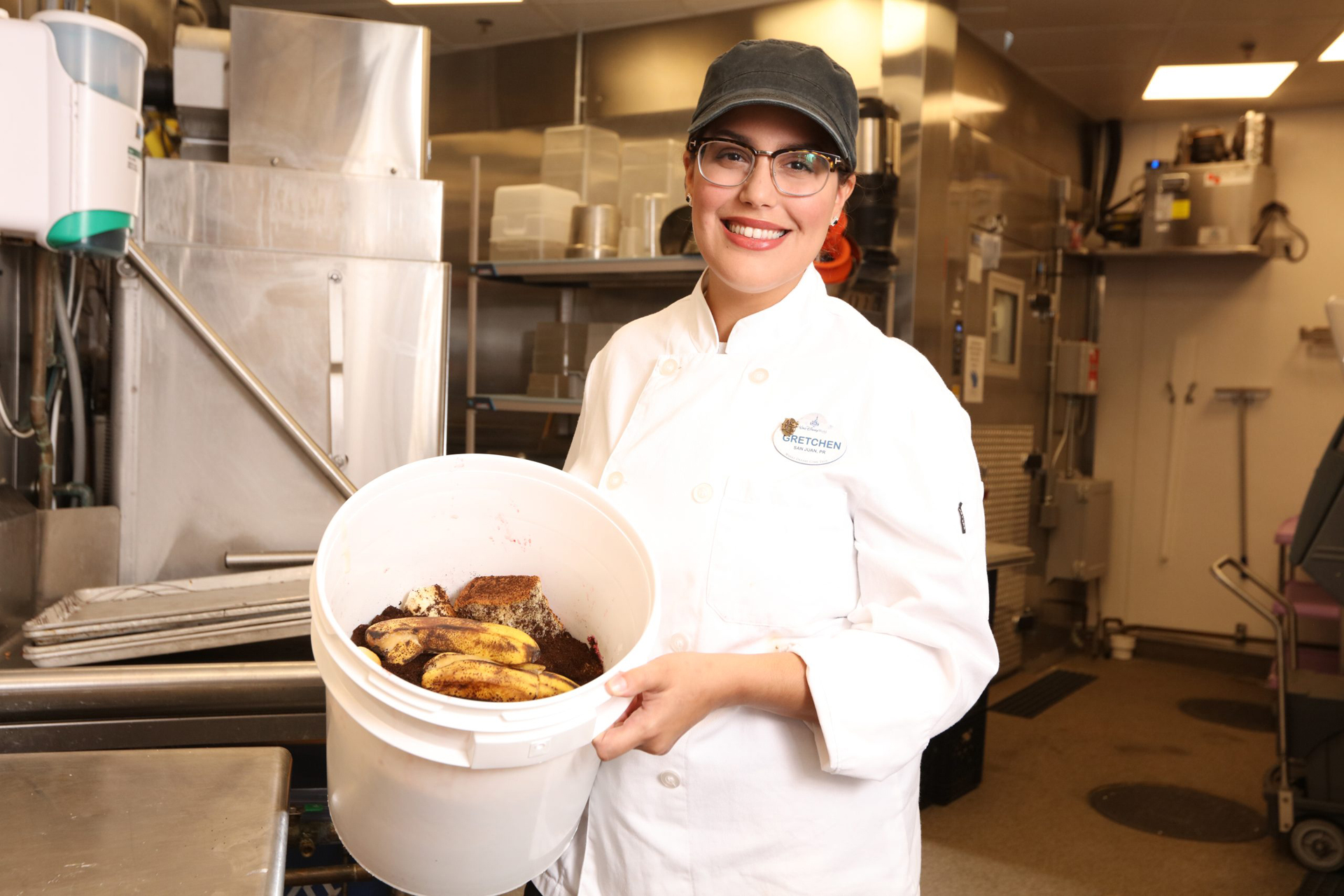
Food Waste Reduction
Walt Disney World Resort is committed to conserving our earth’s resources, and this includes our commitment to reducing food waste. To reduce food waste sent to landfills, Disney’s Vero Beach Resort has installed a biodigester to manage inedible food waste.
Since 1991, Disney Harvest has reduced food waste by gathering excess prepared food from Walt Disney World Resort kitchens – 220 thousand pounds in 2022 – and distributing it through the Second Harvest Food Bank of Central Florida. Food waste from Walt Disney World Resort is sent to an off-site commercial composting facility, and in 2022, the result was 30 million pounds of composted food waste.
The full-circle food cycle at Disney begins with menu planning to predict how many meals we’ll serve in our parks each day. This helps prevent food waste before it begins. If you’ve ever eaten at The Land pavilion in EPCOT, you may have enjoyed some of the fresh, local produce grown inside the attraction.
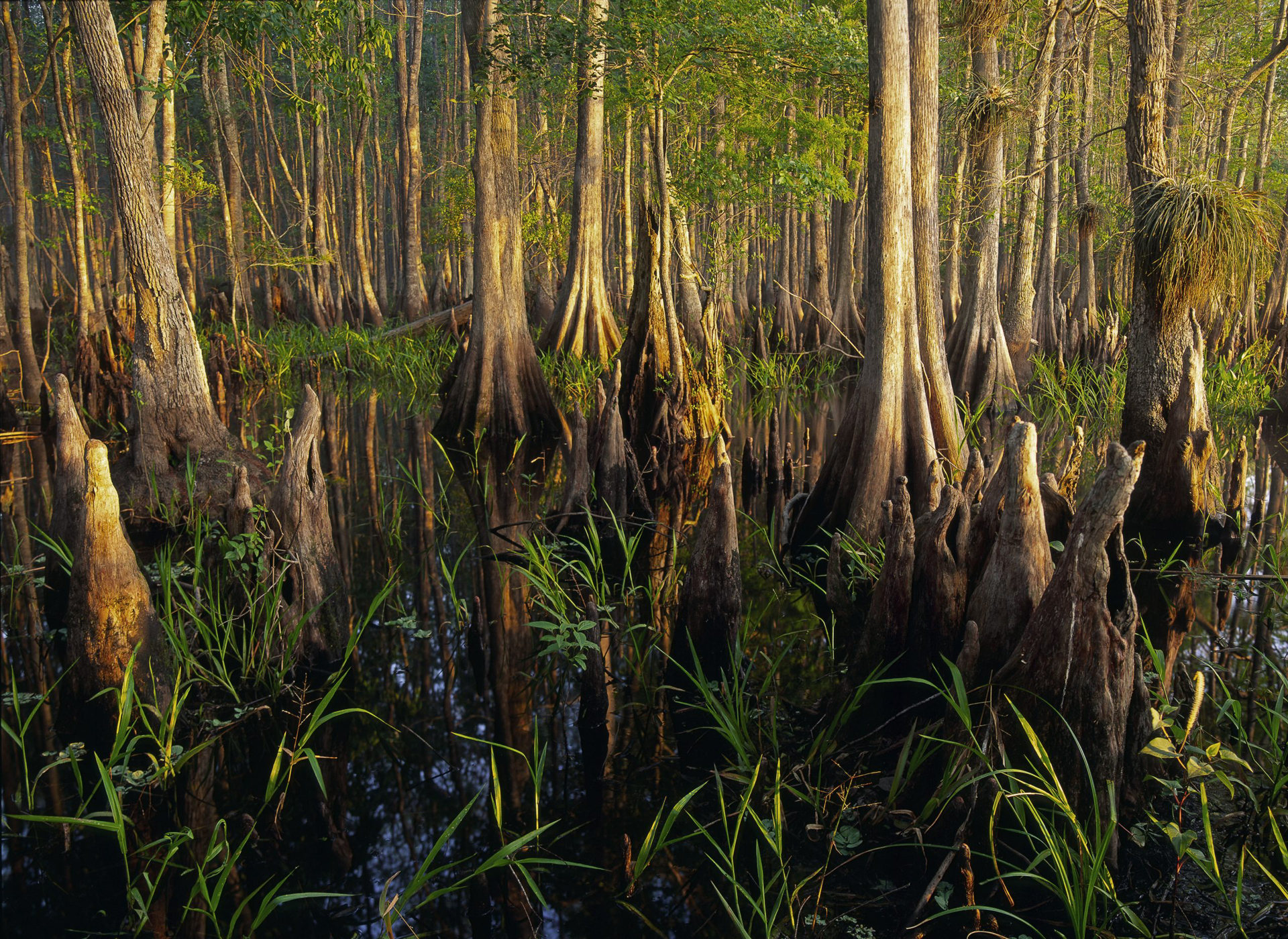
Responsible Development
The Disney Wilderness Preserve includes thousands of acres of protected uplands and wetlands— and is a key part of the Everglades headwaters. In December 1992, The Walt Disney Company (TWDC) acquired the 8,300-acre Walker Ranch. Since then, the land has been donated to The Nature Conservancy for long-term management. The preserve also set an incredible precedent as an ideal partnership between businesses, regulatory agencies and conservation organizations.
Since its opening, the preserve has conserved, protected and managed a total of 11,500 acres— including 8,300 acres of uplands and 3,200 acres of wetlands. The Disney Wilderness Preserve has had countless conservation successes, including landscape-scale restoration, the reintroduction of red-cockaded woodpeckers—a state and federal listed species— and participation in research partnerships with the National Environmental Observatory Network and the University of Central Florida.
Conservation continues to be a top priority for the Walt Disney Company. As a key environmental partner in the region, Disney also acquired the Mira Lago property in 2014, a 3,000-acre tract directly adjacent to Disney Wilderness Preserve and previously slated for development of 10,000 homes. Mira Lago has been restored and preserved in a similar fashion as DWP and is also being used for the protection and relocation of gopher tortoise threatened by development. The land will protect and enhance local water resources and improve the ecological values of nearby conservation lands in perpetuity.
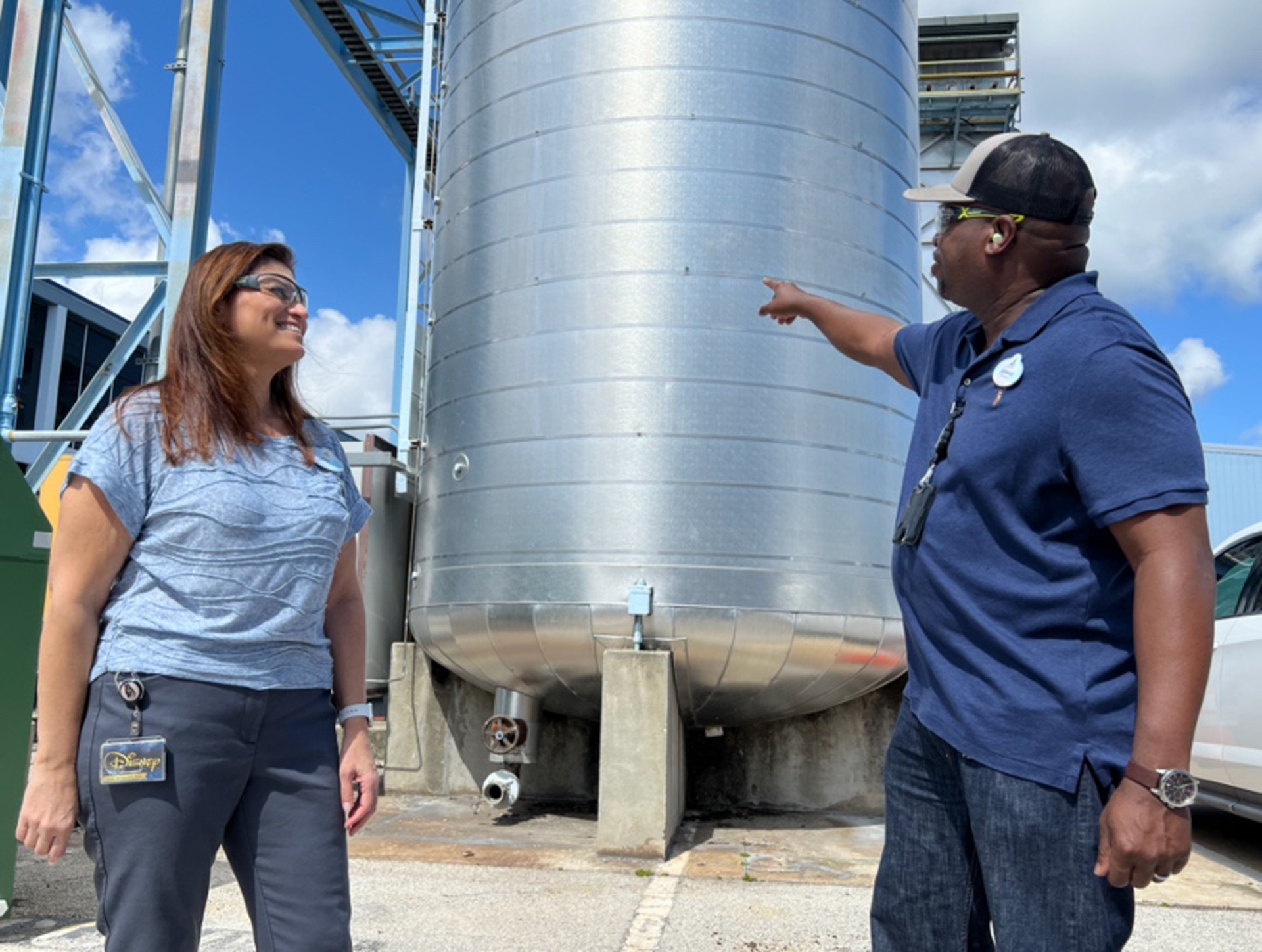
Sustainable Building Design
To reduce the environmental impact of our built environment, we continue to drive efficiency and improvements to ensure that all of our existing and new buildings will be designed and constructed with environmental innovation as a priority. All new projects at Walt Disney World Resort will meet or exceed 90% diversion of construction waste.
Increasing our efficiency efforts in our existing buildings and assets has been, and will continue to be, a core part of our emissions strategy. In the past, these efforts have ranged from chiller replacements and lighting retrofits, to installing intelligent energy management devices.

Transforming Communities
We have played an active role in finding solutions to important matters affecting Floridians. Our Company and its cast members show up as a force for good. In fact, Walt Disney World cast members volunteered 233,000 hours in Central Florida through the Disney VoluntEARS program in 2022.
To recognize and honor the sacrifice and service and offer opportunities for veterans and military spouses, the Walt Disney Company launched Heroes Work Here at Walt Disney World Resort in 2012, an innovative company-wide initiative to hire, train and support returning veterans. A notable portion of the 12,500 veterans hired are employed by Disney businesses throughout Florida.
And since its debut in 2018, Disney Aspire has enabled thousands of part-time and full-time hourly Disney employees and cast members the opportunity to pursue their dreams by providing 100% tuition paid up front at a network of learning partners and universities.
We’re excited to work toward a more sustainable future, and we remain committed to making a difference to inspire optimism and further serve our cast members, guests, consumers, and communities in 2023 and beyond.
